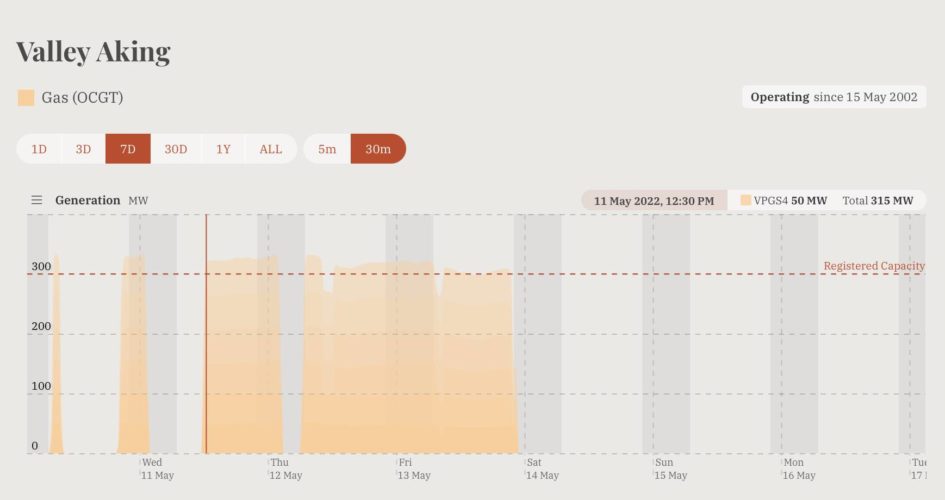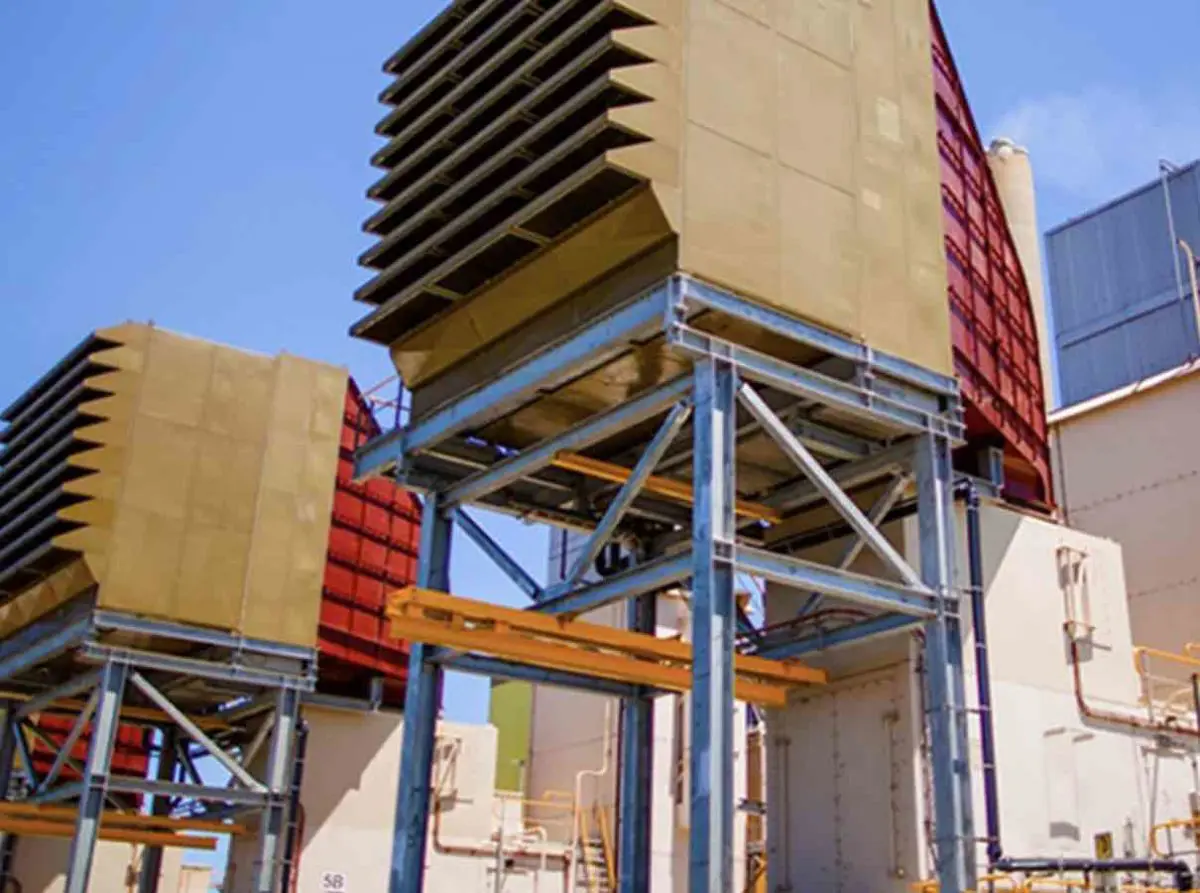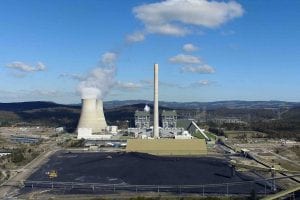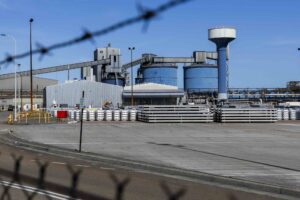So much for the gas-led recovery. Just days out from the federal election, the Coalition government’s only discernable energy strategy – it’s so called gas-led recovery – is looking in tatters, as generators increasingly opt to burn dirty diesel.
Part of the reason is because gas is too expensive. The other part is the failure of the country’s coal plants – with nearly half of the capacity in NSW out action last week – putting pressure on increasingly fragile and costly gas networks, even as hydro output increases dramatically.
The electricity market is currently full of talk of generators deciding to switch to diesel as gas prices soar to unheard of level of $48/gigajoule or more, which would put the price of gas generation well over $500/MWh, according to ITK analyst David Leitch.
See: Energy markets on wild ride as coal and gas costs hit jaw-dropping highs
That’s a ridiculous price, even for “peaking” plant. Some generators have no choice but to generate at that cost, although they are bidding up prices accordingly, which is why the spot market price in most states has surged to unprecedented levels in recent weeks.
Some generation units have an option to switch, because they are “dual fuel”, which means their open cycle turbines can operate on either gas or diesel.
There is talk of switching occurring because diesel, depending on how much has been paid for a litre of diesel, is likely to be cheaper than the gas option.
Diesel, however, is hideously dirty. Its emissions are significantly higher than gas and not that far short of coal generation.
However, others said it was not a price issue, but due to incredible pressure on the system because of the multiple coal outages and on the gas network. They said it pointed to a potential troublesome winter.
The use of diesel as a peaking plant fuel is sometimes necessary when there is no other option at times of extreme demand. In the past 12 months, diesel accounted for just 0.05 per cent of total generation, according to OpenNEM.
But its use in the current market, where there is relatively low demand and when nearly one third of the coal fleet is offline, and gas generation is so expensive, is seen as an indictment of the failure and farce of the Coalition’s government’s fossil fuel focused energy priorities.
Much of the market talk this week has been on the operation of dual fuel generators, and in particular the 300MW Valley Power generator in the Latrobe Valley that is owned and operated by the federal government owned utility Snowy Hydro.

It boasts six 50MW fast start open cycle turbines that can operate with gas, or diesel. It is one of three dual fuel facilities operated by Snowy Hydro, along with Laverton North and Colongra.
All six of the Valley Power turbines operated for nearly 48 hours non-stop from early last Thursday to late Friday, which is highly unusual for a so called “peaking plant.”
More curiously, it mostly bid at prices of minus (yes, minus) $1,000/MWh for much of that time, according to Watt Clarity.
As Paul McArdle noted in his article on Watt Clarity: “I’ve particularly highlighted the period from early morning Thursday 12th May through until Friday evening 13th May with the 6-unit station:
“1) running to maximum availability, and
“2) pushing its bids down to –$1,000/MWh … essentially as a ‘price taker’ in the market.
“Note during this period that the VIC spot price rarely remained quite steady, around-or-above the $300/MWh ASX cap trigger price.”
There is likely to be method in the apparent madness of this situation.
Bidding a negative price ensures that the peaking plant is “dispatched” by the market operator. Wind and solar farms, and coal units, often use the same strategy, particularly when they know the prices will be high.
What’s unusual is for a peaking plant to do this. Snowy Hydro, which dominates the so called “caps” market, will have wanted, perhaps, to generate power to earn revenue itself (and not pay others) and cover its hedging position, some traders said.
it needs to generate something to protect its portfolio position.
It would make sense, some traders said, that given the high gas prices at the time, to switch to diesel to save money, particularly if the generator had ample stocks of diesel that it might have bought at a lower price than currently available.
But such is the opacity of Australia’s electricity market, it’s unclear whether this happened or not.
Two sources with knowledge of the situation said the fuel switching to diesel did occur, but other market traders have no visibility on the fuel used by this or other dual-fuel generators (and there are a few in the market) at any one particular time.
Another well placed source said it is not just a price issue, and that diesel is also being deployed because of the critical shortages of gas, and because last week nearly half of the NSW coal fleet was out of action, and Victoria had a unit of Loy Yang A is also offline.
RenewEconomy reached out to both Snowy Hydro and the Australian Energy Market Operator for comment and clarification, but did not receive a response from either before publication.
However, the situation is seen as symptomatic of what is increasingly described as a failed national electricity market:
a) which is seeing “jaw-dropping” prices, in the words of Leitch, or which are “absolutely nuts”, according to another market player.
b) and where virtually the entire market is unanimous in its frustration with the lack of any coherent energy policy from the current federal government.
As one frustrated participant noted: “The market is broken. The gas led recovery becomes the dirtier diesel led recovery.”
Meanwhile, all eyes will be on the Australian Energy Regulator and its impending ruling on the “default offer”, which provides a guideline on how the big retailers can pass on the surge in wholesale prices to retail customer.
A ruling had been expected by now, but is now anticipated next week, after the election, presumably to give the regulator more time to gather information on wholesale price movements.
(This story has been updated from the original version with new information).








